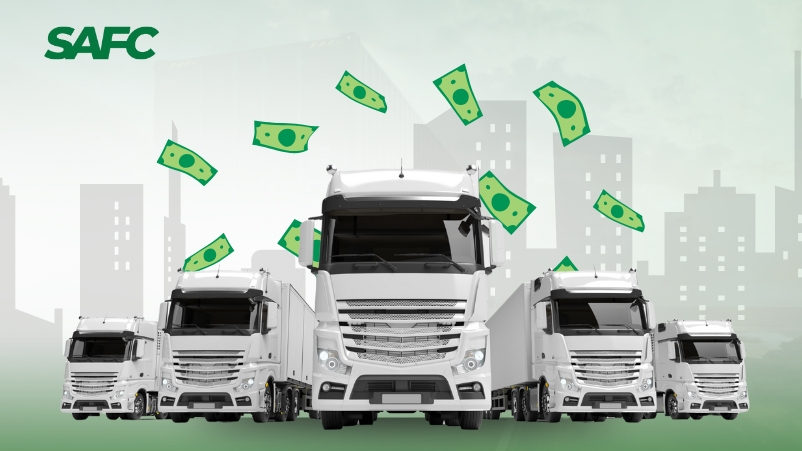What is a Car Loan Takeout in the Philippines?
A Car Loan Takeout in the Philippines simply means replacing your existing car loan with a new one—either from the same lender or with a different financing company. The goal? To get better terms, lower interest, or reduce your monthly payments so you can breathe easier every cutoff.
Think of it like this: Parang nag-refill ka ng tubig sa mas murang refilling station. Pareho pa rin yung tubig na iniinom mo (yung kotse mo), pero mas mura na ngayon yung bayad mo kada galon kasi nakahanap ka ng mas magandang source.
Car Loan Takeout vs. Refinancing vs. Sangla OR/CR
Many Filipinos get confused between these three terms, so let’s break it down:
| Option | What It Means | Best For | Example Scenario |
| Car Loan Takeout | Moving your current loan to a new lender (or restructured by the same lender) for better terms. | Those who want lower monthly sanfernandopampanga@safc.com.phpayments or reduced interest rates. | You’re paying ₱18,000/month. After a takeout, it drops to ₱14,000/month. |
| Car Loan Refinancing | Adjusting your existing loan terms with your current bank or lender. | Those struggling with high payments and wanting a longer term to ease the load. | Extending a 3-year loan to 5 years, making each payment lighter. |
| Sangla OR/CR | Using your vehicle’s OR/CR as collateral to get a new loan (without giving up the car). | Those who need extra cash for emergencies, business, or bills. | You still drive your car, but you get a lump sum loan based on its value. |
Let’s say you bought a sedan worth ₱900,000 a few years ago. You signed up for a loan with a monthly amortization of ₱18,000. With today’s refinancing rates, you might be able to bring that down to ₱14,000.
That’s an extra ₱4,000 saved every month—equivalent to your groceries, Grab rides, or part of your kid’s tuition. Over a year, that’s nearly ₱48,000 in savings.
Why Consider a Car Loan Takeout?

For many Filipinos, owning a car isn’t just about convenience—it can be a lifeline. If you’re an OFW providing for your family, a Grab driver hustling daily on the road, or a middle-class parent juggling tuition fees and household bills, the monthly car payment can sometimes feel heavier than expected. This is where a Car Loan Takeout in the Philippines can provide real relief.
Here are some relatable situations:
1. OFW Supporting Family Back Home
Maria works in Dubai and sends a monthly remittance to her parents in Quezon City. She originally took out a car loan with a ₱18,000 monthly amortization. After a few months, she realized her budget was too tight with tuition fees and household needs. By applying for a car loan takeout, she reduced her monthly payments to ₱14,500, making it easier to support her family without missing payments.
2. Grab Driver Balancing Fuel, Maintenance, and Payments
Jun is a full-time Grab driver in Manila. With gas prices going up and regular car maintenance eating into his income, his ₱20,000 monthly amortization left him with little take-home pay. By refinancing through a car loan takeout, he slashed his monthly payment to ₱16,000, giving him more breathing room for fuel and unexpected expenses.
3. Middle-Class Family with Kids in School
The Santos family in Cavite bought a sedan worth ₱1.2M on financing. With two kids in private school and rising grocery costs, their monthly ₱22,000 car loan payment was a strain. By choosing a Car Loan Takeout, they lowered it to ₱18,000, freeing up cash for school expenses while still keeping the family car.
In short: A Car Loan Takeout in the Philippines makes sense when your current payments eat up too much of your monthly budget. Whether you’re an OFW, a ride-hailing driver, or a parent, refinancing can give you financial breathing room without losing your car.
Benefits of Car Loan Takeout in the Philippines

Lower Monthly Amortization
One of the biggest reasons Filipinos go for a Car Loan Takeout is to lighten their monthly amortization. For example, if you’re paying ₱18,000 per month on a ₱900,000 loan, a takeout with better terms could bring that down to around ₱14,000–₱15,000. That’s an extra ₱3,000–₱4,000 back in your budget every month—enough to cover gas, groceries, or even a part of your kid’s tuition.
Lower Interest Rates
Car loan interest rates in the Philippines can vary a lot. Some banks or financing companies charge 10–12%, while others can offer as low as 6–7% depending on your profile and loan history. A Car Loan Takeout gives you the chance to switch from a higher-rate loan to a lower-rate one. Example: a ₱600,000 loan at 12% interest costs much more over time compared to the same loan at 7% interest—that difference could save you tens of thousands of pesos in the long run.
Extended Payment Terms
Another advantage is flexibility in payment terms. Let’s say your current loan is set for 3 years and it’s too heavy on your monthly budget. Through a car loan takeout, you could stretch the repayment to 5 years. Yes, the total interest might increase slightly, but the breathing room in your monthly cash flow can make it much easier to manage—especially if you’re juggling family bills or irregular income from side hustles or ride-hailing.
Flexible Options with Local Banks & SAFC
Unlike other countries where refinancing options are limited, the Philippines offers multiple ways to do a Car Loan Takeout. Local banks and financing companies often have promos, but one standout option is to refinance car loan at South Asialink Finance Corporation (SAFC). They specialize in solutions that cater to Filipino drivers—whether you’re a first-time buyer, OFW, or Grab driver—making them a practical choice if you want fast approval and locally tailored terms.
Risks & Considerations Before Applying

While a Car Loan Takeout in the Philippines can lower your monthly payments, it’s not always the perfect solution. Before signing any deal, it’s important to understand the risks and hidden costs that might come with refinancing.
Credit Score & Approval Risks in the PH
Approval isn’t guaranteed. Lenders in the Philippines often check your payment history on credit cards, unpaid utility bills, or even telco postpaid lines. For example, if you missed several Globe or Smart bill payments, your credit score might drop, which can affect your chances of getting approved for a takeout loan.
Longer Loan Term = Higher Total Interest
Stretching your payment terms makes your monthly amortization lighter—but you’ll end up paying more overall.
Example:
- Current loan: ₱18,000/month for 36 months → ₱648,000 total.
- Refinanced loan: ₱12,000/month for 60 months → ₱720,000 total.
Yes, it’s easier per month, but the long-term cost is higher.
Processing Fees and Appraisal Charges
Car loan takeouts usually involve fees like:
- Processing fee: ₱3,000–₱5,000
- Appraisal fee: ₱2,000–₱3,500
- Notarial/documentation fees: ₱1,000–₱2,000
These small charges add up, so it’s good to ask the lender for a breakdown before proceeding.
When NOT to Refinance
A Car Loan Takeout may not be practical if your existing loan is almost finished.
Example: If you only have 8 months left at ₱14,000/month (₱112,000 total), refinancing to 24 months at ₱8,000/month may look easier—but you’ll actually pay more in the long run.
Who Can Apply for Car Loan Takeout in the Philippines?

Not everyone qualifies right away for a Car Loan Takeout program. Lenders like banks and financing companies (such as South Asialink Finance Corporation or SAFC) follow specific guidelines to ensure both the borrower and the vehicle are eligible. Here’s what you need to know:
Vehicle Qualifications
- Car models from 2012 and up are generally accepted. Older models may have lower appraisal values, making them harder to approve.
- The vehicle must be in good physical and running condition. A quick inspection ensures the car is roadworthy and can serve as solid collateral.
- Accepted makes include Japanese, Korean, China, and American models—these brands are popular in the Philippine market and have better resale and parts availability.
Loan Eligibility
- Borrowers must have at least 30% outstanding balance with their current bank or lending institution. This ensures the loan isn’t already at its tail end, making takeout refinancing practical.
- Applicants must have no delinquency history with their existing loan. Missed payments or bounced checks may hurt approval chances.
Car Loan Takeout Requirements
Documentation is key when applying for a Car Loan Takeout program. Requirements vary depending on your source of income:
Latest OR/CR (Official Receipt and Certificate of Registration) – Required for all applicants.
If Locally Employed:
- Latest Certificate of Employment (COE)
- Company ID
- Three (3) latest payslips or payroll ATM/bank statement
If Self-Employed:
- Latest Business Permit
- DTI/SEC Registration
- Three (3) latest bank statements
If Employed Abroad / Receiving Remittances (OFW):
- Contract of Employment
- Proof of Remittance / Allotment
- VISA / E-Receipt (for OFWs)
- Seaman’s Book (for seafarers)
By preparing these documents ahead, you increase your chances of smooth approval and faster processing.
How to Apply for a Car Loan Takeout in the Philippines (Step-by-Step)

Applying for a Car Loan Takeout in the Philippines may sound complicated at first, but the process is actually straightforward once you know the steps. Here’s a simple step-by-step guide to help you through it:
Step 1 – Check Current Loan Details (Balance, Rates, Term)
Before anything else, review your existing car loan. Take note of:
- Your outstanding balance
- Current interest rate
- Remaining loan term
This helps you determine whether refinancing will actually save you money. For example, if your balance is already low, a takeout loan might not be worth the effort.
Step 2 – Compare Takeout Offers (Banks vs. SAFC vs. Financing Companies)
Not all lenders offer the same terms. Traditional banks usually provide lower interest rates but may have stricter requirements. On the other hand, financing companies like South Asialink Finance Corporation (SAFC) often have faster processing and more flexible options. Take time to compare interest rates, payment terms, and processing fees before making a decision.
Step 3 – Prepare Documents (Valid ID, OR/CR, payslip, proof of billing, etc.)
Lenders require certain documents to evaluate your eligibility. The most common requirements include:
- Valid government-issued IDs
- Latest OR/CR (Official Receipt / Certificate of Registration)
- Proof of income (payslips, COE, bank statements, or remittance receipts)
- Proof of billing (utility bills or other statements under your name)
Having these ready will make your application faster and smoother.
Step 4 – Submit Application and Wait for Appraisal
Once your documents are complete, submit them to your chosen lender. Your car will then undergo an appraisal to determine its current market value. This ensures the loan amount matches the actual value of your vehicle.
Step 5 – Approval and Loan Release
If approved, your new lender will pay off your existing loan directly with your current bank or financing company. After that, your new Car Loan Takeout officially starts, and you’ll begin making monthly payments based on the new terms.
Car Loan Takeout vs. Sangla OR/CR: Which is Better?

When exploring financial solutions for your vehicle, two common options in the Philippines are Car Loan Takeout and Sangla OR/CR. Both can help ease your financial burden, but they serve different purposes depending on your situation.
Quick Comparison Table
| Option | Best For | How It Works |
| Car Loan Takeout | Car owners with an existing loan | Replaces your current loan with a new one (usually with better rates/terms). |
| Sangla OR/CR | Car owners with a fully paid vehicle | You use your OR/CR as collateral to get a loan while keeping the car with you. |
Example Scenarios
- Grab driver with existing car loan → Takeout
If you’re already paying off a car loan but struggling with high monthly payments or interest rates, a Car Loan Takeout in the Philippines can help by refinancing your loan into more manageable terms. - Car owner with a fully paid vehicle → Sangla OR/CR
If your car is already fully paid, you can still unlock its value through Sangla OR/CR. This allows you to borrow money against your vehicle’s OR/CR without surrendering the car, making it a great option for emergencies or additional capital.
The key difference is simple: Car Loan Takeout is for refinancing an existing loan, while Sangla OR/CR is for getting cash from a fully owned vehicle.
How Much Can You Save?
One of the biggest questions car owners ask about Car Loan Takeout is: “How much will I actually save?” Let’s break it down with simple peso-based examples so you can see the difference in real numbers.
Case Study 1: ₱800,000 Loan – Lower Monthly Amortization
Imagine you still owe around ₱800,000 on your car loan. Your current monthly amortization is high because of steep interest rates. By refinancing through a Car Loan Takeout, you could reduce your monthly payments by about ₱3,000.
That’s an extra ₱36,000 savings per year, money you can redirect to fuel, maintenance, or even your family budget.
Case Study 2: ₱1.2M Loan – Long-Term Interest Savings
Now, let’s say you have a ₱1.2 million car loan. Over 5 years, a Car Loan Takeout with a lower interest rate could save you up to ₱200,000 in total interest payments.
That’s not just about lower monthly bills—it’s long-term financial relief. Imagine what ₱200K could do: upgrade your car, start a small business, or add to your emergency fund.
These examples show how Car Loan Takeout in the Philippines isn’t just about reducing short-term expenses—it’s also about unlocking significant long-term savings.
Final Thoughts: Is Car Loan Takeout Right for You?
At the end of the day, Car Loan Takeout is all about making car ownership more manageable. But is it the right move for you? Let’s recap.
Who Benefits the Most?
- OFWs who want to ease financial pressure on their families back home.
- Grab and TNVS drivers who rely on their car for daily income and need lighter monthly amortizations.
- Middle-class families juggling multiple expenses but still want to keep their car without sacrificing other priorities.
For these groups, a car loan takeout can be a real financial breather.
The Risks to Keep in Mind
Like any financial decision, there are trade-offs. A car loan takeout may come with:
- Longer loan terms, meaning you could pay more in the long run.
- Processing or transfer fees, which add to your upfront costs.
That’s why it’s important to weigh not just the short-term relief but also the total cost over time.
Localized Advice
As we say: “Kung mas magaan ang monthly pero pasok pa rin sa long-term budget, it’s worth considering.” In other words, if lowering your monthly payments helps you breathe easier without putting your future finances at risk, then a car loan takeout might be the smart move.
Ultimately, Car Loan Takeout in the Philippines is best for those who need flexibility now but are mindful of the bigger financial picture.




